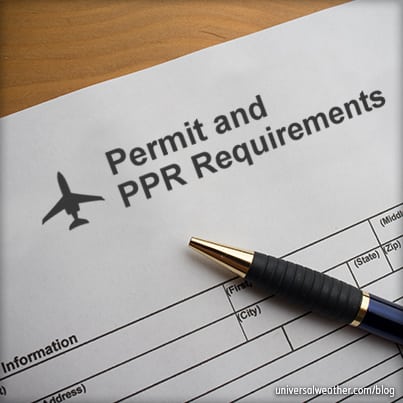Tips on Permits, PPRs and Airport Slots for Singapore


This is a post by author Yvonne Chan. Yvonne is Managing Director for Universal Aviation Singapore, which has an aircraft ground-handling facility in Seletar. Yvonne is an expert on business aircraft operations in Singapore and can be contacted at yvonnechan@universalaviation.aero.
This business aviation blog post is part of a series on operating in Singapore and continues from our last article: “Arranging Aviation Fuel, Security, and Services in Singapore.”
While landing permits are required for all charter (non-scheduled commercial) operations, Singapore is not a difficult operating environment from the permit perspective. Keep in mind, though, that first-time charter landing permits require longer lead times. Here are some tips to help you with the process:
1. Charter (non-scheduled commercial) flights need permits to operate to Singapore
All charter flights operating to Singapore, to both Changi (WSSS) and Seletar (WSSL), require landing permits. Official permit lead time, per Civil Aviation Authority (CAA) Singapore, is seven working days. If all documents are current and in order, CAA may process requests with shorter notice, but there’ll be higher costs. Landing permit lead time is longer for first-time operators, as all documentation must be verified. Available permits include single landings, multiple landings at additional cost, and block permits allowing extended operations over a one-to-six-month timeframe. Block landing permits are recommended for frequent medevac operators. If there are delays for arrival or departure, CAA must be notified. Landing permit revisions can usually be accomplished quickly. However, be aware that CAA is closed on weekends, so delays may be possible, and it’s at their discretion to process short-notice revisions. No landing permits are required for private non-revenue operations. Additionally, no overflight permits are required for any type flight, with the exception of those aircraft that operate with a non-standard airworthiness certificate. These aircraft will be required to apply for and obtain a special permit called “Permit-to-Fly”.
2. Be aware of documentation requirements for charter permits
For a Singapore charter landing permit, you’ll need to provide:
- Air operators certificate (AOC)
- Air operators operations specifications
- Certificates of airworthiness and registration
- Noise certificate
- Worldwide insurance certificate
- Your most recent maintenance release (this has always been a requirement but has been mandatory over recent years)
Once documents are received by your 3rd-party provider, they’ll be submitted to Singapore’s CAA commercial department, who’ll forward documents to the airworthiness department. Once these documents are cleared, the commercial department issues a landing permit. When flight planning, please ensure that the permit number is added to remarks section 18 of the flight plan.
3. Understand permit costs and procedures
Permit charges are on a per-flight basis, with additional costs incurred for short-notice requests (less than the official seven days) but are not based on size or type of aircraft. Pricing options include: single landing (charge for every landing) with standard lead time, single landing with short-notice lead time, and multiple-entry block permits. While operators can request permits directly, CAA prefers that landing permits be arranged via a ground handler. Permits are normally valid until for the duration of the requested operation, plus a deviation of -/+ three days. Block (multiple-entry) permits often have validity periods from one to six months. Preferred means of communication with CAA are e-mail and phone.
4. Prior permissions required (PPRs) are no longer required for Singapore
Prior to Jan. 1, 2012 WSSS required PPRs, but they now require airport slots only (in place of PPRs). As WSSS is a very busy commercial airport with parking constraints due to high traffic, CAA prefers that charter and private non-revenue operators use WSSL instead.
5. Ramp checks occur in Singapore so be prepared
Airport authorities randomly check aircraft, usually just after arrival, to ensure that documents including landing permits are in order. Best practice is to have copies of all required documents ready and available. Also, your ground handler should have a copy of your charter landing permit, in case the crew does not have it.
Conclusion
It’s important to assemble all required documents, including the most recent maintenance release, when applying for Singapore landing permits. A range of permit options, from single entry to block permits, can be organized with the help of your 3rd-party provider.
Questions?
If you have any questions about this article, contact me at yvonnechan@universalaviation.aero.
Later we’ll discuss permit and PPR considerations for Singapore.




